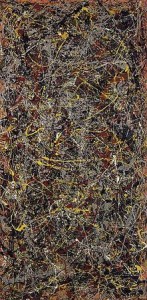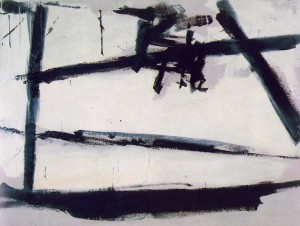Abstract Expressionism in the 1950s and Famous Works
Abstract expressionism is an art movement that boomed after World War II, during the 1940s and 50s. It is the first American art movement that influenced the international art scene. The name came from the German Expressionists which is known for emotional intensity and the European abstract schools such as Futurism and Cubism. The movement is known for its spontaneity, energy, and messiness. Works done in the movement show an unconventional application of paint, loose writing, and colors that create tension. Paintings do not show recognizable subjects, instead, you’ll see colors, textures, lines, forms, and mixed media.

The years prior and during the World War II, European artists took refuge in the United States. Paris, previously the center of the world’s art culture, was damaged after the war and New York replaced Paris as the art capital of the world. Most artists in this movement live in New York, giving the movement another name, The New York School. They created new ways of applying paint on canvas, such as Jackson Pollock’s “drip” technique, Willem de Kooning’s “Action painting,” and Mark Tobey’s “white writing.”
Famous Works
No.5, 1948 by Jackson Pollock
Jackson Pollock is one of the most influential artist in the Abstract Expressionist Movement. His No.5 painting is the second most expensive painting in the world and is considered as the best example of artworks in the movement. Pollock drizzled yellow and brown paints over the fiberboard, using his emotions take the lead of how the paint was put on the canvas.
The Liver is the Cock’s Comb (1944) by Arshile Gorky
Founder of the 1920s cultural movement called Surrealism, André Breton considered this painting as “one of the most important paintings made in America.”
The Gate (1959-60) by Hans Hofmann
Hans Hofmann painted The Gate from 1959-60. The painting is part of a series inspired by architectonic volumes. Hofmann painted rectangles in several bold colors which may seem subjectless but studying the piece, you will see that the relationship among the shapes in the painting resembles a gate as stated by the title.

Woman Series (1950-52) by Willem de Kooning
In the 1950s, Willem de Kooning, a famous “action painter,” exclusively painted women as subjects. He used strong brush strokes and high-key colors which produced blatant images of women. The paintings exaggerated the features of women such as huge limbs, big eyes, and toothy snarls.
Painting Number 2 (1952) by Franz Kline
Franz Kline is best known for his paintings in black and white. Many think that his pieces are influenced by the Japanese calligraphy but he denied it.
Image source: www.wikipedia.org